Text
Week 10: Trolling in the Digital Age: From Playful Provocation to Malicious Disruption

The proliferation of the internet has facilitated the emergence of virtual social environments, fostering a new realm for human interaction. Consequently, social behaviour has transcended the physical world, migrating to the online sphere. One such behaviour, trolling, has become a pervasive issue with significant negative consequences. Many people have fallen victim to trolling and have experienced a wide range of negative psychological problems as a result, which may explain the high level of public agreement about the detrimental effect of online trolls among internet users (Volkmer et al. 2023).
Online trolling can be conceptualized as a repetitive and disruptive form of deviant online behaviour directed by an individual towards others or groups (Rodwell 2016). The perpetrator, or "internet troll," is a member of an online community who deliberately disrupts, attacks, or offends others by posting inflammatory content such as comments, photos, or videos (Volkmer et al. 2023). They always use fake usernames, profile photos, and profile descriptions (Gemiharto & M.Si 2020).

Trolls have been categorized as insult trolls, persistent debate trolls, profanity trolls, all-caps trolls, show-off trolls, and so on (Case & King 2018). One of the newest and more disturbing facets of trolling is the emergence of revenge porn (Case & King 2018). In 2016, for example, a Data & Society Research Institute study found that one in 25 Americans were harassed through revenge porn. The poll found that individuals aged 15-29 are the most likely to report being threatened with the sharing of nude or nearly nude images, a 7% occurrence. For those age 30 and older, the incidence was 2%. Another troubling aspect of trolling of late is that bots are now being used to automate trolling or the spreading of opinion. Of the 314,000 accounts tweeted two weeks before the UK referendum on European membership, 15% were heavily or entirely automated.
The Evolution of "Trolling" in Online Discourse

The concept of "trolling" in online environments has undergone a significant semantic shift in recent years. Before 2011, the term was primarily associated with transgressive humour intended to entertain a community (Bishop 2014). This aligns more closely with the classical definition of trolling, where the objective is to foster a sense of camaraderie through playful provocation.
However, the rise of "R.I.P. Trolling" – the abhorrent practice of targeting memorial pages – exemplifies a more malicious interpretation of the term (Walter et al. 2012). This trend coincides with the activities of the hacktivist group Anonymous, which popularized the use of "troll" to describe their exploitative behaviour on platforms like the Manga website (http://www.4chan.org). This distinction highlights the crucial difference between classical trolling, intended for consensual entertainment and community building, and the more recent, malicious form. Classical trolling thrives on fostering bonds within a community through a shared sense of amusement at the expense of another participant, who is considered to be "in on the joke" (Bishop 2014). In contrast, Anonymous-style trolling targets individuals outside the group, solely for the perpetrator's gratification or to share within a closed community ("clubhouse") that condones such behaviour (Bishop 2014). The motivation here is purely self-serving, inflicting distress on an unwitting victim.
Further research by Turner characterizes trolls as those who initiate seemingly legitimate discussions with the sole purpose of provoking unproductive arguments (Turner et al. 2005). This necessitates a sub-categorization within the realm of "abusive trolling." Bishop proposes "flame trolling" to describe malicious and humourless attacks, contrasting them with "kudos trolling," which employs transgressive humour (though not exclusively) to entertain others (Bishop 2012). This framework acknowledges the subjectivity of offence; what one finds offensive ("flame") could be perceived as entertaining ("kudos") by another (Bishop 2014). Applying this distinction to both classical and Anonymous-style trolling offers a more nuanced understanding of the phenomenon.
Why do people troll?

One explanation is that the internet can facilitate disinhibition (Suler 2004) which positively predicts cyberaggression (Kurek, Jose & Stuart 2019). According to an early study on trolls, users engage with trolling because they are bored, seek attention or revenge, and find it funny to create trouble for platforms and other users (Shachaf & Hara 2010). Trolls employ various tactics to achieve disruption, including messages that appear sincere but are intended to provoke, or messages that waste time through unproductive arguments (Herring et al. 2002). At times, the media and scholars conflate trolling with any negative behaviour that occurs online, e.g., cyberbullying, parody, or flaming, when the definition of trolling should be limited to social phenomena “performed individually or collectively in varying online contexts, which involves the use of antagonism, deception and vigilantism […] to provoke reactions from people or institutions” (Demsar et al. 2021). Notably, the above describes a kind of trolling behaviour that aims to negatively affect other users and online discussions.
The Effects of Trolling on Individual People and the Society

The phenomenon of online trolling has emerged as a significant concern, demonstrably impacting both individuals and society as a whole (Xavier 2022). Trolls engage in deliberately provocative behaviour, aiming to incite conflict and emotional distress within online communities. Teenagers, characterized by increased vulnerability and susceptibility to peer pressure, are particularly susceptible to the detrimental effects of trolling (Vidushi, G. & Snetageri 2020). In extreme cases, cyberbullying tactics employed by trolls have been linked to instances of self-harm and suicide among teenagers (Vidushi, G. & Snetageri 2020). Furthermore, the disclosure of personal information, such as photographs or private details, by trolls can have devastating consequences for victims (Ortiz 2020). The constant barrage of negativity and harassment disrupts emotional well-being and erodes self-esteem, not only among teenagers but also within the broader population (Xavier 2022). Social media platforms, originally designed to foster connection, have become breeding grounds for hostility due to the prevalence of trolling (Xavier 2022). This necessitates further research into the motivations and psychological underpinnings of trolling behaviour, alongside the development of effective mitigation strategies.
Solutions to Trolling Activities
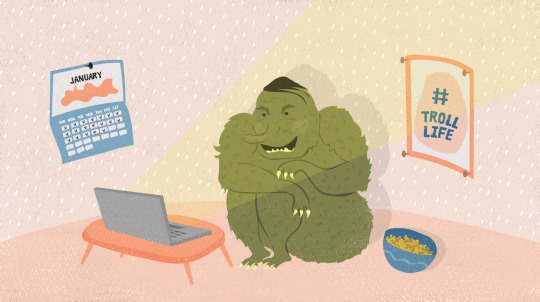
Due to the multifaceted nature of trolling tactics, effectively mitigating their detrimental effects necessitates a multi-pronged approach. This necessitates addressing the issue at the individual, online platform, and legislative levels. On an individual level, a crucial tenet for internet users is to avoid engaging with trolls ("do not feed the trolls") (Cook 2019). This strategy emphasizes maintaining composure in the face of provocative or insulting messages. While adherence can be challenging, the benefits are substantial: reduced stress levels, a preserved positive mood, and conserved time. However, solely relying on individual rationality might be insufficient. In instances of severe trolling behaviour, more discreet interventions such as severing communication or disclosing the troll's identity might be warranted (Sanfilippo, Yang & Fichman 2017). Furthermore, internet users perceive ignoring not only as a reactive measure but also as a preventative strategy.
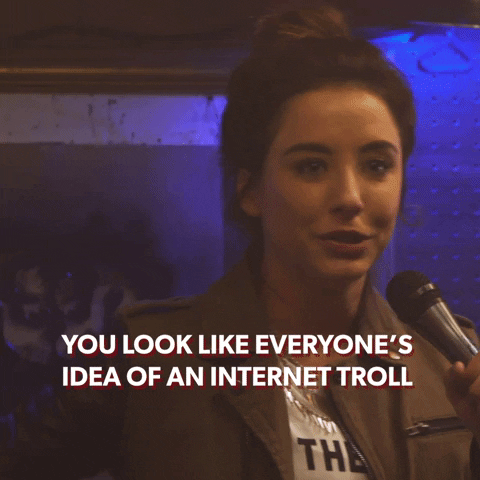
Reference list
Bishop, J 2014, ‘Representations of “trolls” in Mass Media communication: a Review of media-texts and Moral Panics Relating to “internet trolling”’, International Journal of Web Based Communities, vol. 10, no. 1, p. 7.
Bishop, J 2012, ‘Scope and Limitations in the Government of Wales Act 2006 for Tackling Internet Abuses in the Form of “Flame Trolling”’, Statute Law Review, vol. 33, no. 2, pp. 207–216.
Case , CJ & King, DL 2018, ‘Internet Trolling Victimization: an Empirical Examination of Incidence in Undergraduate Business Students ’, Research in Higher Education Journal, vol. 34.
Cook, CL 2019, ‘Between a Troll and a Hard Place: the Demand Framework’s Answer to One of Gaming’s Biggest Problems’, Media and Communication, vol. 7, no. 4, pp. 176–185.
Demsar, V, Brace-Govan, J, Jack, G & Sands, S 2021, ‘The Social Phenomenon of trolling: Understanding the Discourse and Social Practices of Online Provocation’, Journal of Marketing Management, vol. 37, no. 11-12, pp. 1058–1090.
Gemiharto, I & M.Si, S 2020, ‘The Phenomenon of Internet Trolling and the Spreading of Hate Speech on Social Media’, International Journal of Psychosocial Rehabilitation, vol. 24, no. 1, pp. 510–517.
Herring, S, Job-Sluder, K, Scheckler, R & Barab, S 2002, ‘Searching for Safety Online: Managing “Trolling” in a Feminist Forum’, The Information Society, vol. 18, no. 5, pp. 371–384.
Kurek, A, Jose, PE & Stuart, J 2019, ‘“I Did It for the LULZ”: How the Dark Personality Predicts Online Disinhibition and Aggressive Online Behavior in Adolescence’, Computers in Human Behavior, vol. 98, pp. 31–40.
Ortiz, SM 2020, ‘Trolling as a Collective Form of Harassment: an Inductive Study of How Online Users Understand Trolling’, Social Media + Society, vol. 6, no. 2.
Rodwell, E 2016, ‘Online Trolling and Its perpetrators: under the Cyberbridge’, New Media & Society, Rowman & Littlefield Publishers, London.
Sanfilippo, MR, Yang, S & Fichman, P 2017, ‘Managing Online Trolling: from Deviant to Social and Political Trolls’, Proceedings of the 50th Hawaii International Conference on System Sciences, AIS Electronic Library (AISeL).
Shachaf, P & Hara, N 2010, ‘Beyond vandalism: Wikipedia Trolls’, Journal of Information Science, vol. 36, no. 3, pp. 357–370.
Suler, J 2004, ‘The Online Disinhibition Effect’, CyberPsychology & Behavior, vol. 7, no. 3, pp. 321–326.
Turner, TC, Smith, MA, Fisher, D & Welser, HT 2005, ‘Picturing Usenet: Mapping Computer-Mediated Collective Action’, Journal of Computer-Mediated Communication, vol. 10, no. 4.
Vidushi, V, G., GK & Snetageri, VN 2020, ‘Trolling on Social Media Sites and Its Correlation with Teenage Depression’, Journal of Evidence Based Medicine and Healthcare, vol. 7, no. 10, pp. 497–502.
Volkmer, SA, Gaube, S, Raue, M & Lermer, E 2023, ‘Troll story: the Dark Tetrad and Online Trolling Revisited with a Glance at Humor’, YH Balcioglu (ed.), PLoS One, vol. 18, no. 3, p. e0280271.
Walter, T, Hourizi, R, Moncur, W & Pitsillides, S 2012, ‘Does the Internet Change How We Die and Mourn? Overview and Analysis’, OMEGA - Journal of Death and Dying, vol. 64, no. 4, pp. 275–302.
Xavier, S 2022, ‘Impact of Trolling and Its Effects on the Popularity of Social Media’, IJSDR, vol. 7, no. 8.
0 notes
Text
Week 9: Game On! Gamification Revolutionizes Tourism Marketing

The past few years have witnessed the rise of gamification as a creative marketing strategy across various industries, including tourism (Nurrahmania & Grahita 2021). Gamification refers to the integration of game design elements into non-game contexts (Nurrahmania & Grahita 2021). Coined by Nick Pelling in 2002, the concept has been further refined by Deterding who define it as "the use of game design elements in non-game contexts" (Deterding et al. 2011). Within the service sector, gamification is viewed as a process of enriching a service with features that promote "gameful experiences" and enhance overall user value creation (Huotari & Hamari 2012).

In the tourism and hospitality industry, gamification is considered a marketing innovation as it can create fun, excitement, arousal, pleasure, and a sense of achievement (Negruşa et al. 2015). Its potential lies in creating engaging and entertaining experiences that can foster brand awareness, interaction, and communication (Xu et al. 2015). The proliferation of new technologies like social media, smartphones, and gaming platforms provides the necessary tools to develop such experiences (Xu et al. 2015). Augmented reality (AR) and virtual reality (VR) are particularly noteworthy, as they allow for the creation of gamified models that overlay digital environments with animations and simulations of historical, cultural, and natural features within destinations (Özkul, Uygun & Levent 2020). This immersive approach can significantly enhance the tourist experience.

Several countries and destinations, including Brazil, Thailand, Ireland, and Germany, have begun implementing gamification strategies in their tourism promotion efforts, utilizing channels ranging from social media to video games (Nurrahmania & Grahita 2021). For instance, the Onet Go and Crossword Go games have demonstrably increased tourist arrivals from Malaysia and Singapore by 24.56% and 16.46%, respectively (Pramana 2019). Furthermore, cross-promotion through games developed in other countries is also emerging. The inclusion of famous tourist destinations from Thailand's secondary provinces within the popular mobile game Ragnarok Origin by Korean developer Gravity serves as a prime example (Thông tấn xã Việt Nam 2024). Beyond locations, the game incorporates iconic Thai cultural elements like Muay Thai costumes and war elephants as in-game items.

Vietnam has also entered the gamification arena with the launch of "Taken Soul," a horror game developed by SOGA Studio. Set in Da Lat city during the 2000s, the game features familiar landmarks like Xuan Huong Lake and the Da Lat Pedagogical College. Additionally, it incorporates recognizable Vietnamese products like Miliket instant noodles (adapted as "Miuket" within the game). The selection of Da Lat as the game's setting capitalizes on the city's unique blend of natural beauty, rich culture, and spiritual heritage, creating a compelling backdrop for a horror narrative. The development team conducted meticulous research on Da Lat's geography, architecture, and culture to ensure an authentic representation. Furthermore, the game's support for over five international languages, including English, Chinese, and Japanese, demonstrates the developer's commitment to reaching a global audience. This not only enhances accessibility for players from diverse cultures but also offers them a deeper and richer opportunity to experience and learn about Vietnamese culture.
Reference list
Deterding, S, Dixon, D, Khaled, R & Nacke, L 2011, ‘From game design elements to gamefulness’, Proceedings of the 15th International Academic MindTrek Conference on Envisioning Future Media Environments - MindTrek ’11, vol. 11, pp. 9–15.
Huotari, K & Hamari, J 2012, ‘Defining Gamification - a Service Marketing Perspective’, Proceeding of the 16th International Academic MindTrek Conference on - MindTrek ’12, pp. 17–22.
Negruşa, A, Toader, V, Sofică, A, Tutunea, M & Rus, R 2015, ‘Exploring Gamification Techniques and Applications for Sustainable Tourism’, Sustainability, vol. 7, no. 8, pp. 11160–11189.
Nurrahmania, A & Grahita, B 2021, ‘Analysis of Tourism Game Effectiveness as Promotional Strategy’, Advances in Social Science, Education and Humanities Research, Atlantis Press.
Özkul, E, Uygun, E & Levent, S 2020, ‘Digital Gamification in the Tourism Industry’, Handbook of Research on Smart Technology Applications in the Tourism Industry, IGI Global, pp. 169–203.
Pramana, E 2019, ‘Lewat Game, Budaya Indonesia Dikenalkan Ke Mancanegara - Jawa Pos’, Lewat Game, Budaya Indonesia Dikenalkan Ke Mancanegara - Jawa Pos, viewed 15 March 2024, <https://www.jawapos.com/teknologi/01235391/lewat-game-budaya-indonesia-dikenalkan-ke-mancanegara>.
Thông tấn xã Việt Nam 2024, ‘Thái Lan Quảng Bá Du Lịch Qua Game’, Tuoi Tre Online, viewed 15 March 2024, <https://tuoitre.vn/thai-lan-quang-ba-du-lich-qua-game-20240227110956902.htm>.
Xu, F, Tian, F, Buhalis, D, Weber, J & Zhang, H 2015, ‘Tourists as Mobile Gamers: Gamification for Tourism Marketing’, Journal of Travel & Tourism Marketing, vol. 33, no. 8, pp. 1124–1142.
1 note
·
View note
Text
Week 8: Tiktok's "Filter For Good" raising money for Palestine
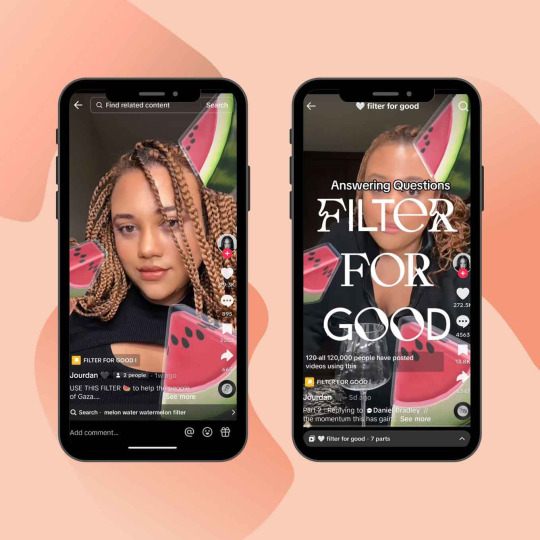
The proliferation of social media platforms has ushered in a new era of media activism. This form of media activism leverages the interactive features of these platforms to reach a wider audience and achieve mass mobilization (Benjamin 2018). Information dissemination on social media is characterized by its virality, spreading rapidly within seconds. Social media platforms function as "networked publics," unique spaces that blend technology, individuals, and practices (Boyd 2011, pp. 39–58). These networked publics enable people to congregate for social, cultural, and civic purposes, offering affordances not found in traditional public spheres. Notably, social activism flourishes within these networked publics, as evidenced by the exponential growth witnessed on platforms like Facebook, Twitter, and more recently, TikTok (Rotman et al. 2011).

TikTok, in particular, has emerged as a unique platform centred on user-generated content, serving as a primary source of entertainment, discussion, and interaction (Kaye, Chen & Zeng 2020). This platform has proven effective in disseminating information and galvanizing users into acting upon their political beliefs. Research suggests that a significant portion (77%) of TikTok users credit the platform with fostering their awareness of social justice and political issues (Oluoch 2023). This phenomenon can be partially attributed to a youthful user base frustrated by the perceived inadequacy of traditional news outlets. These young users leverage social media to access a more diverse range of news, information, and perspectives (Rasker 2023).
The freedom offered by TikTok empowers young users to express their viewpoints and engage in backchannel communication (Abbas et al. 2022). During the recent Israel-Gaza conflict, for instance, TikTok served as a platform for real-time reporting and information sharing (Abbas et al. 2022). Young Palestinians, in particular, leveraged the platform's reach to advocate for action (Abbas et al. 2022). Beyond individual expression, social media facilitates the exchange of information, fosters awareness raising, allows for the articulation of grievances, mobilizes communities, and enables fundraising efforts.

A recent example of this phenomenon is the "Filter for Good" on TikTok, an augmented reality (AR) filter to raise funds for Palestine. Created by content creator Jourdan Johnson, the filter involved collecting virtual watermelon seeds, a symbolic reference to Palestinian solidarity (Rasker 2023). When people use the "Filter for Good," the creator gets rewarded through TikTok's program for popular effects. This program lets successful creators (with at least 5 published effects and 3 effects used in over 1,000 videos each) earn money from their viral creations. They can get direct payments and even chances for sponsored promotion. Creators are ranked based on how many effects they have and how often they're used, with badges showing their progress. Basically, the more people use the filter, the more money the creator gets to donate to charities in Gaza. While AR filters for entertainment, and beauty purposes are commonplace across social media (Barker 2020), this specific filter served the critical function of raising awareness about Palestinian issues and amplifying the voices of activists. The widespread use of this filter demonstrates its effectiveness in garnering support and attracting followers for the cause. However, it is crucial to acknowledge the potential misuse of such filters. The success of the "Filter for Good" campaign on TikTok has unfortunately spawned imitations designed to disseminate misinformation. Moreover, various sources claim Palestine hasn't actually received the donations from the creator. This phenomenon underscores the critical need for digital literacy in the age of social media activism. Mitigating the spread of misinformation requires digital citizens to adopt a cautious approach, evaluating information thoroughly before sharing or engaging with it.
Reference list
Abbas, L, Fahmy, SS, Ayad, S, Ibrahim, M & Ali, AH 2022, ‘TikTok Intifada: Analyzing Social Media Activism among Youth’, Online Media and Global Communication.
Barker, J 2020, ‘Making-up on mobile: the Pretty Filters and Ugly Implications of Snapchat’, Fashion, Style & Popular Culture, vol. 7, no. 2, pp. 207–221.
Benjamin, T 2018, ‘Social Media Activism: Limitation and Benefits’, Inosr Arts and Management, vol. 4, no. 1, pp. 30–37.
Boyd, D 2011, A Networked Self : Identity, community, and Culture on Social Network Sites, Z Papacharissi (ed.), Routledge, New York ; London, pp. 39–58.
Kaye, DBV, Chen, X & Zeng, J 2020, ‘The co-evolution of two Chinese mobile short video apps: Parallel platformization of Douyin and TikTok’, Mobile Media & Communication, vol. 9, no. 2, pp. 229–253.
Oluoch, T 2023, ‘Trend: TikTok Activism’, Paramount Insights, viewed 15 March 2024, <https://insights.paramount.com/post/trend-tiktok-activism/>.
Rasker, R 2023, ‘TikTok Filters Are the Latest Weapon in Online Activism — but Do They work?’, ABC News, 21 November, viewed 15 March 2024, <https://www.abc.net.au/news/2023-11-22/tiktok-s-filter-for-good-trend/103126878>.
Rotman, D, Vieweg, S, Yardi, S, Chi, E, Preece, J, Shneiderman, B, Pirolli, P & Glaisyer, T 2011, ‘From Slacktivism to activism: Participatory Culture in the Age of Social Media’, Proceedings of the 2011 Annual Conference Extended Abstracts on Human Factors in Computing Systems - CHI EA ’11, pp. 819–822.
0 notes
Text
Week 7: Chasing the Chiseled Look: The Rise of Buccal Fat Removal
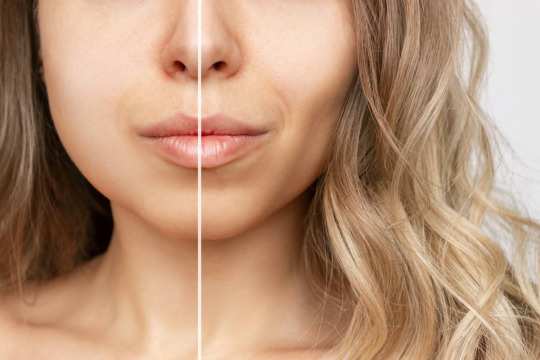
The pursuit of physical attractiveness through body modifications, exemplified by plastic surgery, reflects a socially constructed ideal of the human body. This practice has witnessed a recent surge in popularity, highlighting the evolving social and cultural landscape surrounding body image.
In recent times, there has been a surge in media coverage of cheek fat removal surgery, propelling this cosmetic procedure to the forefront of discussion on social media platforms like TikTok, Twitter, and Instagram. The prevalence of the hashtag #buccalfatremoval on these platforms is constantly rising, with TikTok alone garnering over 125.5 million views under the hashtag (Kircher 2022). This widespread attention has positioned cheek fat removal as a prominent trend within the 2023 beauty landscape.
The facial structures known as buccal fat pads, or Bichat's fat pads, are anatomically significant contributors to both facial aesthetics and the uninhibited movement of facial musculature (Davis & Serra 2022). These adipose structures, encapsulated in a thin membrane and situated within the midface region, exhibit a trilobed configuration. The BFP comprises three distinct lobes: the anterior lobe positioned anterior to the masseter muscle's leading edge, the intermediate lobe residing between the masseter and buccinator muscles, and the posterior lobe extending into the temporal masticatory space (Dubin et al. 1989). Consequently, the BFP demonstrates a close anatomical relationship with the masticatory system, facial nerve, and parotid duct (Tapia, Ruiz-de-Erenchun & Rengifo 2006).

Buccal fat removal has emerged as a prominent trend in cosmetic surgery, driven in part by the allure of celebrities and the pervasiveness of social media. This procedure gained significant public attention in late 2021 following former Victoria's Secret model Chrissy Teigen's disclosure on her Instagram account, boasting over 42 million followers, that she had undergone buccal fat removal and expressed satisfaction with the outcome. The surgery resulted in a noticeable shift in Teigen's facial structure, transitioning from a fuller appearance to a more sculpted one with sharper contours.

Celebrities often serve as aspirational figures, particularly for younger demographics, who may seek to emulate their appearance (Maltby & Day 2011). Research suggests a substantial influence of celebrities on cosmetic surgery decisions (Maltby & Day 2011). Celebrity influence model provides a framework for understanding this phenomenon. The model posits a potential link between exposure to celebrities through media and individuals' attitudes towards cosmetic procedures (Wen 2017).
The celebrity influence model posits that exposure to mediated celebrities fosters parasocial relationships, leading audiences to develop positive affect towards the celebrity and potentially identify with them (Wen 2017). This identification motivates audiences to align their own values, beliefs, and behaviours with those projected by the celebrity across various sociocultural contexts. Research suggests a strong link between the desire to resemble media figures and body image concerns (Thomsen et al. 2002). This association is thought to contribute to the adoption of sociocultural appearance ideals (Thompson et al. 2004). For instance, Harrison demonstrated that women experiencing heightened interpersonal attraction towards thin female celebrities (encompassing admiration, self-similarity, and a desire to emulate them) exhibited greater symptoms of eating disorders, characterized by body dissatisfaction and a strong drive for physical transformation (Harrison 1997).

The contemporary trend of celebrities undergoing buccal fat removal and subsequently sharing their experiences on social media platforms has demonstrably influenced public perception and contributed to the increase in the number of individuals seeking this cosmetic procedure.
Furthermore, social media platforms act as significant facilitators of this growing interest. Social media's ability to disseminate trends rapidly exposes users to the latest cosmetic procedures seen in celebrities (Duffy & Meisner 2022). Additionally, these platforms empower patients to share their personal experiences with cosmetic surgery (Sorice et al. 2017). This increased transparency, reflected in the statement "People are now sharing their experiences more," contributes to the erosion of the stigma surrounding cosmetic procedures (Sottile 2022). Notably, a substantial portion of facial plastic surgeons, with figures as high as 55% encountering patients influenced by social media, report an impact on their practices (Arab et al. 2019). This phenomenon extends beyond personal experiences, as discussions surrounding celebrities' potential cosmetic surgeries, including procedures like buccal fat removal, further fuel the public's fascination with this topic.

Sociocultural theorists posit that exposure to idealized appearances prevalent on the internet and social media platforms constitutes a form of appearance pressure (Rodgers & Melioli 2015). Research has demonstrated a positive correlation between such exposure and behaviours indicative of body image dissatisfaction, including increased investment in appearance-related practices (de Vries et al. 2014), desire for cosmetic procedures, and heightened body image and eating concerns across diverse demographic groups.
Further elaboration within sociocultural theory emphasizes the inordinate emphasis placed on achieving unrealistic societal standards of beauty, which is thought to contribute to the onset and persistence of body image disturbances (Rodgers & Melioli 2015).
The prevalence of buccal fat removal appears concentrated within Western societies. Beyond its functional applications, a significant factor contributing to its popularity is the longstanding influence of Western beauty ideals. These ideals exert pressure on women and girls to conform to a specific image: fair-skinned, youthful, slender, toned, and physically attractive, often characterized by high cheekbones (Mckay, Moore & Kubik 2018) – a stark contrast to the traditionally preferred "fuller" cheeks observed in some Asian cultures (Chen et al. 2020). Several studies suggest this trend is further amplified by the pervasive "fatphobic" beauty narrative (Al-Adawi et al. 2011). The fear of being overweight holds significant influence in societies where thinness is widely lauded as the standard of beauty, including the West. These societal pressures are often internalized and transformed into personal aspirations, shaping individual perceptions of what constitutes an ideal body (Hardie, Oshiro & Dixon 2022).
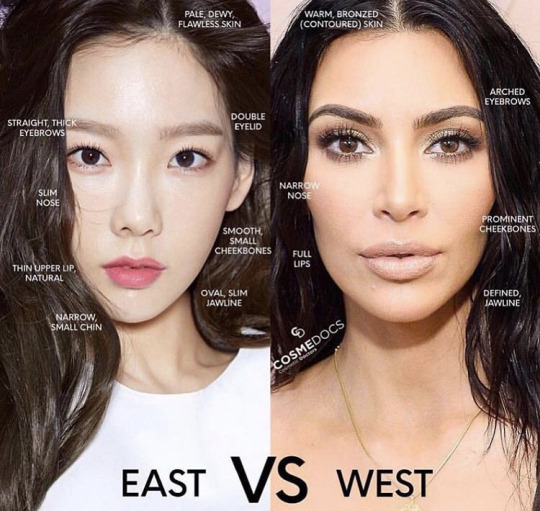
While this practice may offer benefits such as enhanced self-esteem for participants, concerns have been raised by surgeons regarding potential complications, including infection and permanent facial alterations. Given the prevalence of misinformation on social media platforms, careful consideration is necessary. This includes acquiring proper training, selecting a qualified provider, and self-assessing suitability. Citizens in the digital age, empowered by access to information, must critically evaluate online content to discern fact from fiction and avoid misconceptions surrounding this procedure.
Reference list
Al-Adawi, S, Jaju, S, Al-Zakwani, I & Dorvlo, ASS 2011, ‘Culture to Culture: Fat-Phobia and Somatization’, in VR Preedy, RR Watson & CR Martin (eds), Handbook of Behavior, Food and Nutrition, Springer New York, NY, pp. 1457–1473.
Arab, K, Barasain, O, Altaweel, A, Alkhayyal, J, Alshiha, L, Barasain, R, Alessa, R & Alshaalan, H 2019, ‘Influence of Social Media on the Decision to Undergo a Cosmetic Procedure’, Plastic and Reconstructive Surgery - Global Open, vol. 7, no. 8, p. e2333.
Chen, T, Lian, K, Lorenzana, D, Shahzad, N & Wong, R 2020, ‘Occidentalisation of Beauty Standards: Eurocentrism in Asia’, Across the Spectrum of Socioeconomics, vol. 1, no. 2.
Davis, B & Serra, M 2022, ‘Buccal Fat Pad Reduction’, PubMed, StatPearls Publishing, Treasure Island (FL).
de Vries, DA, Peter, J, Nikken, P & de Graaf, H 2014, ‘The Effect of Social Network Site Use on Appearance Investment and Desire for Cosmetic Surgery among Adolescent Boys and Girls’, Sex Roles, vol. 71, no. 9-10, pp. 283–295.
Dubin, B, Jackson, IT, Halim, A, Triplett, WW & Ferreira, M 1989, ‘Anatomy of the Buccal Fat Pad and Its Clinical Significance’, Plastic and Reconstructive Surgery, vol. 83, no. 2, pp. 257–262.
Duffy, BE & Meisner, C 2022, ‘Platform Governance at the margins: Social Media Creators’ Experiences with Algorithmic (in)visibility’, Media, Culture & Society, vol. 45, no. 2, p. 016344372211119.
Hardie, A, Oshiro, KF & Dixon, MA 2022, ‘Understanding Body Image Perceptions of Former Female athletes: a Qualitative Analysis’, Body Image, vol. 43, pp. 393–407.
Harrison, K 1997, ‘Does Interpersonal Attraction to Thin Media Personalities Promote Eating disorders?’, Journal of Broadcasting & Electronic Media, vol. 41, no. 4, pp. 478–500.
Kircher, MM 2022, ‘Why Is Everyone Suddenly Obsessed with Buccal Fat?’, The New York Times, 16 December, viewed 12 March 2024, <https://www.nytimes.com/2022/12/16/style/buccal-fat-removal-tiktok-plastic-surgery.html>.
Kwak, J 2021, ‘The Influence of Western Culture on Plastic Surgery Consumption in South Korea’, Journal of Gynecology and Womens Health, vol. 21, no. 2.
Maltby, J & Day, L 2011, ‘Celebrity Worship and Incidence of Elective Cosmetic Surgery: Evidence of a Link among Young Adults’, Journal of Adolescent Health, vol. 49, no. 5, pp. 483–489.
Mckay, A, Moore, S & Kubik, W 2018, ‘Western Beauty Pressures and Their Impact on Young University Women’, International Journal of Gender and Women"s Studies, vol. 6, no. 2, Online, pp. 2333–603.
Miller, L 2020, ‘Deracialisation or Body Fashion? Cosmetic Surgery and Body Modification in Japan’, Asian Studies Review, vol. 45, no. 24, pp. 1–21.
Moura, L-B, Spin, J-R, Spin-Neto, R & Pereira-Filho, V-A 2018, ‘Buccal Fat Pad Removal to Improve Facial aesthetics: an Established technique?’, Medicina Oral, Patología Oral Y Cirugía Bucal, vol. 23, no. 4, pp. e478–e484.
Rodgers, RF & Melioli, T 2015, ‘The Relationship between Body Image Concerns, Eating Disorders and Internet Use, Part I: a Review of Empirical Support’, Adolescent Research Review, vol. 1, no. 2, pp. 95–119.
Sorice, SC, Li, AY, Gilstrap, J, Canales, FL & Furnas, HJ 2017, ‘Social Media and the Plastic Surgery Patient’, Plastic and Reconstructive Surgery, vol. 140, no. 5, pp. 1047–1056.
Sottile, Z 2022, ‘Why Everyone Is Suddenly Talking about Buccal Fat Removal’, CNN, viewed 14 March 2024, <https://edition.cnn.com/style/article/buccal-fat-removal-explainer-trnd/index.html>.
Tapia, A, Ruiz-de-Erenchun, R & Rengifo, M 2006, ‘Combined Approach for Facial Contour Restoration: Treatment of Malar and Cheek Areas during Rhytidectomy’, Plastic and Reconstructive Surgery, vol. 118, no. 2, pp. 491–497.
Thompson, JK, Berg, PVD, Roehrig, M, Guarda, AS & Heinberg, LJ 2004, ‘The Sociocultural Attitudes Towards Appearance Scale-3 (SATAQ-3): Development and Validation’, International Journal of Eating Disorders, vol. 35, no. 3.
Thomsen, SR, McCoy, JK, Gustafson, R & Williams, Hm 2002, ‘Motivations for Reading Beauty and Fashion Magazines and Anorexic Risk in College-Age Women’, Media Psychology, vol. 4, no. 2, pp. 113–135.
Today 2022, ‘Buccal Fat Removal Is the Latest Trending Plastic surgery. Why Are People Doing it?’, Today, viewed 14 March 2024, <https://www.today.com/health/skin-beauty/buccal-fat-removal-rcna62422>.
Traboulsi-Garet, B, Camps-Font, O, Traboulsi-Garet, M & Gay-Escoda, C 2021, ‘Buccal Fat Pad Excision for Cheek refinement: a Systematic Review’, Medicina Oral Patología Oral Y Cirugia Bucal, vol. 26, no. 4, pp. e474–e481.
Wen, N 2017, ‘Celebrity Influence and Young People’s Attitudes toward Cosmetic Surgery in Singapore: the Role of Parasocial Relationships and Identification’, International Journal of Communication, vol. 11, no. 1, pp. 1234–1252.
0 notes
Text
Week 6: The Rise of Slow Fashion and the Power of Influencers

The fashion industry has emerged as a leading contributor to environmental pollution on a global scale. Numerous environmental impact assessments have documented the concerning extent of the industry's detrimental impact, which intensifies alongside its growth (Nguyen Thi Van, Vu Tran Bao & Pham Quang 2023). A study conducted by the United Nations reveals that the fashion industry is the second-largest consumer of water globally, while simultaneously contributing to 10% of global carbon emissions and nearly 20% of global wastewater generation. Experts widely acknowledge "fast fashion" as a significant factor exacerbating this environmental wastefulness.
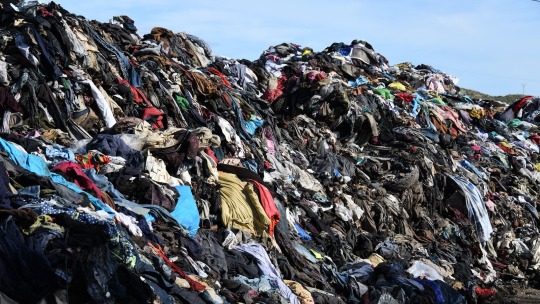
Emerging in the 1980s, "fast fashion" has become synonymous with rapid trend cycles and frequent new collections at low prices. This business model, characterized by its emphasis on affordability and trend-driven production, has fostered a culture of overconsumption, resulting in a significant overproduction of textile waste (Pucci, Tufarelli & Giliberti 2022).

Emerging in contrast to the prevalent fast fashion model, "slow fashion" presents a multifaceted approach to the global fashion landscape. This philosophy extends beyond mere environmental sustainability and waste reduction, encompassing the well-being of individual workers, often possessing highly specialized craftsmanship. The term "slow fashion" was first coined by Kate Fletcher, who envisioned it as a holistic approach to design, production, consumption, and ultimately, improved living standards. Fletcher emphasized that slow fashion transcends temporal constraints, prioritizing quality over fleeting trends (Fletcher 2007). It advocates for a paradigm shift, fostering increased awareness among designers, buyers, retailers, and consumers regarding the multifaceted impacts of fashion products on workers, communities, and ecosystems (Fletcher 2010). Driven by growing environmental consciousness and a commitment to individual well-being, consumers are demonstrably shifting their value perceptions and purchasing behaviours (Domingos, Vale & Faria 2022). This evolving landscape has witnessed a surge in support for slow fashion in recent years, as consumers increasingly demand higher standards from brands in terms of sustainability and ethical practices.

Influencers play a significant role in promoting slow fashion due to their ability to shape consumer behaviour. Beyond traditional beauty and fashion influencers, a growing number of individuals promote sustainable engagement by advocating for green products and encouraging environmentally friendly practices on social media (Jacobson & Harrison 2021). These "sustainable influencers" utilize various content formats, including articles, images, and videos, to not only introduce novel ideas, creative styles, and diverse perspectives to the fashion world but also to cultivate a sense of community and inspire others to adopt more sustainable consumption habits (Kapoor, Tagore & Dua 2022).

Driven by technological advancements and the burgeoning online presence of digital citizens, the fashion industry has witnessed a rapid shift towards digitalization (Sayem 2022). This era of "digital fashion" has given rise to a novel form of marketing – virtual influencers (Bieńkowska 2023). These computer-generated characters, crafted using software like Unreal Engine and Photoshop (Conti, Gathani & Tricomi 2022), are exerting a demonstrably real influence on consumer behaviour (Jin 2023). Studies reveal that virtual influencers boast three times the engagement rate compared to their human counterparts, captivating audiences with their unique aesthetics and digitally enhanced appearances (Zhong 2022). A 2022 report by The Influencer Marketing Factory indicates that 58% of respondents follow virtual characters on social media, with 35% having made purchases based on their recommendations. Additionally, 27% are drawn to the content these virtual figures generate. This compelling evidence suggests that incorporating virtual influencers into marketing strategies can significantly enhance brand recognition, stimulate discussion, and foster interaction on social media platforms.

Transcending mere digital mannequins, virtual influencers cultivate vibrant online communities through their carefully constructed personas and narratives (Conti, Gathani & Tricomi 2022). Notably, several virtual influencers have emerged as champions of slow fashion, actively promoting and amplifying sustainable practices within the online fashion sphere (Shin & Lee 2023).

Noonouri, a CGI creation born in 2018, has garnered significant attention on Instagram with over 371,000 followers. This "branded demon girl" transcends traditional influencer archetypes, promoting not only high fashion from renowned brands but also ethical and sustainable practices. Created by Joerg Zuber, Noonouri's aesthetic draws inspiration from Bratz dolls and Betty Boop, offering a unique blend of cuteness and rebelliousness. Notably, Noonouri actively advocates for vegetarianism and sustainable fashion, refusing to endorse fur products. This commitment extends to social activism, as evidenced by her participation in Naomi Campbell's Fashion For Relief event in 2018. Beyond fashion, Noonouri has established herself as a beauty influencer, collaborating with Dior Makeup since 2018 and recently appearing in Kim Kardashian West's makeup tutorials. By combining high fashion with ethical and sustainable values, Noonouri offers a unique perspective within the influencer landscape, potentially influencing consumer behaviour and perceptions of beauty in the digital age.
By combining fashion with ethical and sustainable values, Noonouri and other virtual/social media influencers are influencing consumer behaviour and perceptions, potentially shaping the fashion industry's future towards a more responsible and sustainable future.
Reference list
Bieńkowska, J 2023, ‘Virtual versus Sustainable fashion: a Systematic Literature Review’, Zeszyty Naukowe, vol. 2023, no. 178, Silesian University of Technology, pp. 101–126.
Conti, M, Gathani, J & Tricomi, PP 2022, ‘Virtual Influencers in Online Social Media’, IEEE Communications Magazine, vol. 60, no. 8, pp. 1–13.
Domingos, M, Vale, VT & Faria, S 2022, ‘Slow Fashion Consumer Behavior: a Literature Review’, Sustainability, vol. 14, no. 5, p. 2860.
Fletcher, K 2007, ‘Slow Fashion’, The Ecologist, vol. 37, no. 5, pp. 60–61.
Fletcher, K 2010, ‘Slow Fashion: an Invitation for Systems Change’, Fashion Practice, vol. 2, no. 2, pp. 259–265.
Jacobson, J & Harrison, B 2021, ‘Sustainable fashion social media influencers and content creation calibration’, International Journal of Advertising, vol. 41, no. 1, pp. 1–28.
Jin, C 2023, ‘The Influence of Virtual Influencers on People’s Consumption’, Proceedings of the 2022 3rd International Conference on Big Data Economy and Information Management (BDEIM 2022), pp. 362–368.
Kapoor, PS, Tagore, A & Dua, S 2022, ‘Social Media Influencer Promoted Sustainable Fashion: Effects of Sponsorship and Benefit Association’, Journal of Promotion Management, vol. 29, no. 4, pp. 1–30.
Nguyen Thi Van, A, Vu Tran Bao, N & Pham Quang, H 2023, ‘Sustainable Fashion Consumption Trends of Vietnamese Youth’, IOSR Journal of Humanities and Social Science (IOSR-JHSS), vol. 28, no. 8, pp. 8–17.
Pucci, E, Tufarelli, M & Giliberti, L 2022, ‘Slow Fashion Accompanies Digital Towards a Sustainable Future: from Quantity to Quality. Reflections on the New Paradigm of Sustainable Fashion’, Proceedings of the Design Society, vol. 2, pp. 1091–1098.
Sayem, ASM 2022, ‘Digital Fashion Innovations for the Real World and Metaverse’, International Journal of Fashion Design, Technology and Education, vol. 15, no. 2, pp. 139–141.
Shin, Y & Lee, S 2023, ‘Issues of Virtual Fashion Influencers’ Reproduced bodies: a Qualitative Analysis Based on Body Discourse’, Fashion and Textiles, vol. 10, no. 1, Springer Nature.
Zhong , L 2022, ‘Analyses of the Relationship between Virtual Influencers’ Endorsements and Customer Brand Engagement in Social Media’, Advances in Economics, Business and Management Research, Atlantis Press International B.V.
1 note
·
View note
Text
W5: Digital Citizenship and Political Engagement

Digital citizens refer to individuals or groups who utilize digital technology for the purpose of engaging in networked participatory behaviours (Lu et al. 2023). It involves four interconnected elements: individual, policy, political, and social participation (Lu et al. 2023). Digital citizens imply equality in transmitting and receiving knowledge (Jessenia et al. 2020), regardless of factors that might cause exclusion such as gender, age, and social and economic status. Digital citizenship is briefly defined as the norms of responsible behaviour considering the use of technology by digital citizens such as ethical awareness, empathy, and responsibility (Mossberger, Tolbert & McNeal 2007). But nowadays, digital citizenship has evolved into a form of online engagement and participation through appropriate communication and decision-making processes (M Jones & J Mitchell 2016). One of the characteristics of digital citizenship is the high level of activity in responding to public issues by citizens, especially through social media (Mulyono et al. 2023). The citizen’s participation in public issues refers to the term “engagement” which is understood to include social capital, civic engagement, and political participation (Skoric et al. 2016). Social media therefore serves as a key tool to boost citizen engagement through communication, discussion, and the coordination of public and social activities (Warren, Sulaiman & Jaafar 2014).

Twitter exemplifies a powerful platform for citizen engagement and political communication tools (Campos-Domínguez 2017). Research suggests its potential to increase voter engagement, as evidenced in the 2010 UK elections, the 2012 US presidential elections, and the 2013 Italian elections (Murthy 2015). Notably, the 2012 US elections saw Twitter abuzz with hashtags like #gop, #gop2012, and #republicanprimary, demonstrating its role in shaping public discourse.
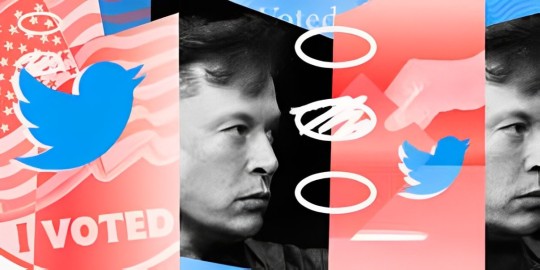
While Twitter serves as a valuable tool for political campaigns, debates, crowdsourcing, and information verification, it also presents challenges. Its speed, immediacy, and hashtag-driven nature can facilitate the spread of misinformation, rumours, and even verbal violence(Oh, Eom & Rao 2015). Research suggests its potential for opinion-building, democratic development, and even limited media freedom in regions where voting rights are restricted. However, the 2016 US election saw Twitter potentially contribute to decreased approval ratings for Trump, possibly due to a "backlash" effect from moderate voters against his unique Twitter behavior (Bursztyn, Egorov & Fiorin 2020). Trump's prolific tweeting differed from other candidates in tone, content, and hashtag usage. Notably, his tweets often included disinformation and distrustful narratives. His signature #MAGA hashtag fostered a community of followers who readily spread his messages, further amplified by media coverage, creating a self-reinforcing cycle.
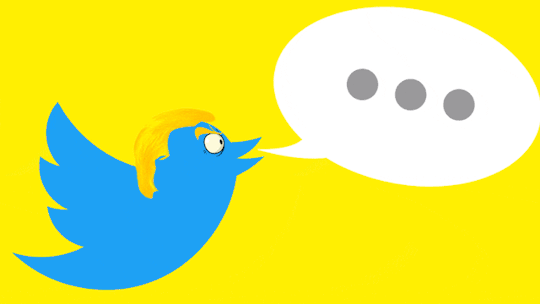
Reference list
Bursztyn, L, Egorov, G & Fiorin, S 2020, ‘From Extreme to Mainstream: the Erosion of Social Norms’, American Economic Review, vol. 110, no. 11, pp. 3522–3548.
Campos-Domínguez, E 2017, ‘Twitter Y La Comunicación Política’, El Profesional De La Información, vol. 26, no. 5, p. 785.
Jessenia, N, Dalila, V, Barredo Ibáñez, D & Pérez Lagos, C 2020, ‘Digital Citizenship and Participation through Twitter: the Case of Provincial Capital Municipalities in Ecuador (2009–2019)’, Advances in Intelligent Systems and Computing, pp. 681–692.
Lu, H, Fu, K, Liu, X & Hu, W 2023, ‘Digital Citizen Participation of College students: Reality and Optimization Path’, Problems of Education in the 21st Century, vol. 81, no. 2, pp. 244–257.
M Jones, L & J Mitchell, K 2016, ‘Defining and Measuring Youth Digital Citizenship’, New Media & Society, vol. 18, no. 9, pp. 2063–2079.
Mossberger, K, Tolbert, CJ & McNeal, RS 2007, Digital Citizenship, The MIT Press.
Mulyono, B, Affandi, I, Suryadi, K & Darmawan, C 2023, ‘Online Civic Engagement through Social media: an Analysis of Twitter Big Data’, Jurnal Cakrawala Pendidikan, vol. 42, no. 1.
Murthy, D 2015, ‘Twitter and elections: Are tweets, predictive, reactive, or a Form of buzz?’, Information, Communication & Society, vol. 18, no. 7, pp. 816–831.
Oh, O, Eom, C & Rao, HR 2015, ‘Research Note—Role of Social Media in Social Change: an Analysis of Collective Sense Making during the 2011 Egypt Revolution’, Information Systems Research, vol. 26, no. 1, pp. 210–223.
Skoric, MM, Zhu, Q, Goh, D & Pang, N 2016, ‘Social Media and Citizen engagement: a meta-analytic Review’, New Media & Society, vol. 18, no. 9, pp. 1817–1839.
Warren, AM, Sulaiman, A & Jaafar, NI 2014, ‘Social Media Effects on Fostering Online Civic Engagement and Building Citizen Trust and Trust in Institutions’, Government Information Quarterly, vol. 31, no. 2, pp. 291–301.
0 notes
Text
W4: Reality TV in Vietnam - "Beautiful Sisters Who Rides the Wind and Waves"

Reality TV is a kind of television program that demonstrates non-played situations in which real people, whether ordinary citizens or politicians and celebrities, find themselves (Filonenko 2017). This means that the situation can be structured, planned and known in advance, but how exactly people will speak or formulate their thoughts – these will be happening “in life” (Filonenko 2017). Moreover, it also reflects the true gender identity, perspective, and discourse of the participants (Deller 2019). In Vietnam, genres of ordinary television’, typically, game shows, quiz shows, talk shows, and reality shows, gradually outweighed television dramas in terms of popularity, becoming the key television products from the 2000s onwards (Giang Nguyen-Thu 2018). Despite adaptations of foreign formats, "Vietnamization" occurs through the integration of local values and family structures (Westmor 2021).

"Beautiful Sisters Who Rides the Wind and Waves" based on a Chinese format just broadcast on Vietnam TV recently, features 30 female artists working in many fields over 30 year olds competing in a music group formation. Then through the rounds, the audience will vote for their favorite artists to have the opportunity to debut in the winning group. Choosing who remained on the show “empower[ed] viewers to shape outcomes” similar to other reality TV programs such as Big Brother (L’Hoiry 2019). The program scored points for conveying positive messages to the public such as age is not a limit, motivation to overcome comfort zones and conquer new challenges, and promoting the value of team spirit to overcome all difficulties (Xu 2021). Furthermore, it also portrays the vitality of independent and hardworking women in the entertainment industry (Xu 2021).

The show's popularity extends beyond television, generating a significant buzz on platforms like Facebook and TikTok. Its Vietnamese version ranked second among "The most explosive music programs on social networks" within three months, highlighting its effectiveness in digital engagement. Achieving many explosive views on YouTube, many songs reached the top of the charts after the premiere date such as the mashup Diem Xua & Dai Minh Tinh reached the top 2 and the song "Duong Cong" at the top 5. Moreover, the performances in the show accounted for 1/3 YouTube trending music chart with high rankings.
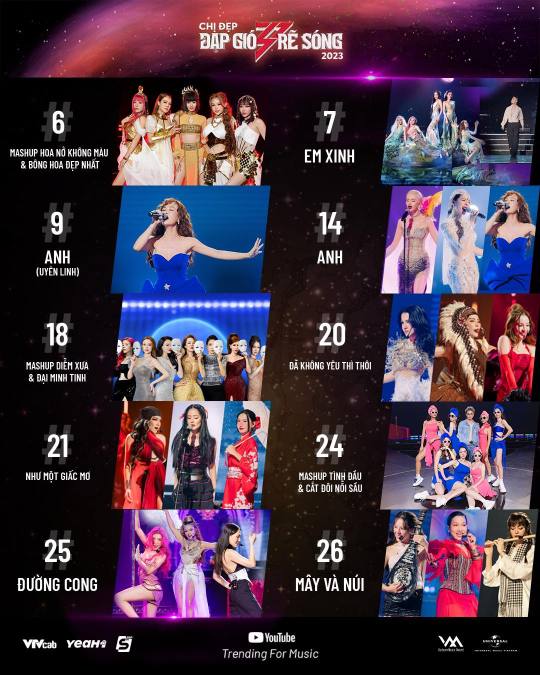
The number of discussions about the contest in Facebook groups also increased. Internet memes, which are known for their rapid dissemination and viral nature, have emerged as a common form of communication in social media (G. Balan et al. 2023). In order to convey humour and meaning, memes are multimodal in nature, combining text, images, videos, and other elements (G. Balan et al. 2023). Millennials and GenZ are the biggest users of social networks and social media users are engaged with more entertaining content than ever before especially with online memes (Vitiuk et al. 2020). The show leverages memes to attract online interaction and promote new episodes. Humorous content and discussion topics engage viewers and generate buzz.

Fans play a crucial role by voting and creating "fandoms" to support their idols (Fuschillo 2018). Fandom plays a big role in supporting and enhancing idol achievements and developing the idol's public persona (Zhao 2022). Moreover, they are also one of the factors that help idols become more known (Zhao 2022).
Despite its popularity, "Beautiful Sisters Who Rides the Wind and Waves" faces criticism regarding scripted elements, scoring methods, advertising, and data privacy. Le Quyen and Mlee are two typical examples from the TV show receiving a lot of criticism from antis due to their actions and statements. They receive so much criticism that they have Facebook groups where there are antis inside discussing and bringing them down, there are even groups with a large number of antis up to 21k. Therefore, every time a new episode premieres, there are many articles discussing the show's turnaround or even compliments for idols or criticism from antis. Despite its popularity, "Beautiful Sisters Who Rides the Wind and Waves" faces criticism regarding scripted elements, scoring methods, advertising, and data privacy. While these criticisms can be harsh, they contribute to the show's "liveness" and highlight the media's role in fostering public discourse (Deller 2019). Although the program has received many mixed opinions, the show still creates a valuable space for people to share, discuss and express opinions on issues surrounding the program.
The case of "Beautiful Sister Riding the Wind and Waves" underscores the multifaceted nature of reality TV in Vietnam. It reflects the audience's growing appetite for unscripted content, their engagement with social media, and their desire for stories that resonate with their values and aspirations. As more such shows are produced, Vietnamese television is poised to attract wider audiences and further influence popular culture.
Reference list
Deller, RA 2019, ‘Chapter Six: Reality Television in an Age of Social Media’, Reality Television: the Television Phenomenon That Changed the World, Emerald Publishing Limited.
Filonenko, A 2017, ‘Reality Show in Modern System of Mass Communication (Based on Ukrainian Reality Shows)’, Current Issues of Mass Communication, vol. 18, no. 22, pp. 8–18.
Fuschillo, G 2018, ‘Fans, fandoms, or fanaticism?’, Journal of Consumer Culture, vol. 20, no. 3, p. 146954051877382.
G. Balan, S, Daryl A. Aguipo, K, A. Cabaguing, R, P. Edar, L, Nacionales, J & Fabi Claridad, N 2023, ‘Meme Virality and Humour style: Exploring Internet Memes as a Multimodal Language in Social Media’, Journal of Language and Pragmatics Studies, vol. 2, no. 3, pp. 228–233.
Giang Nguyen-Thu 2018, Television in Post-Reform Vietnam, Routledge.
L’Hoiry, X 2019, ‘Love Island, Social Media, and Sousveillance: New Pathways of Challenging Realism in Reality TV’, Frontiers in Sociology, vol. 4, no. 59, pp. 1–13.
Vitiuk , I, Polishchuk, O, Kovtun, N & Fed, V 2020, ‘Memes as the Phenomenon of Modern Digital Culture’, WISDOM, vol. 15, no. 2, pp. 45–55.
Westmor, T 2021, The Ordinary Family?: Adaptation and Mimicry in Vietnamese Transnational Television, Thesis, University of California riverside.
Xu, F 2021, ‘Sisters Who Make Waves and Contemporary Female Identity’, International Journal of Social Science Studies, vol. 9, no. 3, pp. 51–56.
Zhao, Y 2022, ‘Analysis of the Social Impact of Fandom Culture in “Idol” Context’, Advances in Journalism and Communication, vol. 10, no. 04, pp. 377–386.
0 notes
Text
Week 3:
Beyond the "Thin Ideal": Tumblr's Role in the Fat Acceptance Movement
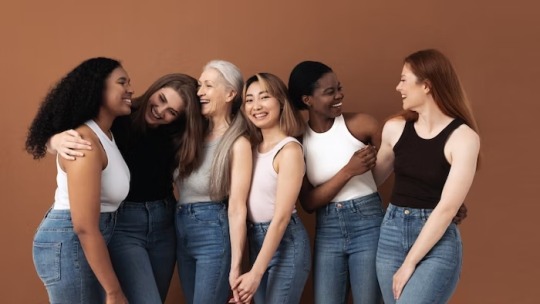
For decades, mainstream media has dominated the portrayal of ideal beauty, often presenting narrow and exclusionary standards for women (Henriques & Patnaik 2021). This "thin ideal" has typically favoured young, white, and able-bodied individuals, while marginalizing and demonizing fat bodies (Grabe, Ward & Hyde 2008). These representations depict fatness as grotesque, destined for ill health, and a burden on the public purse (Ata & Thompson 2010). Traditional media platforms offered limited opportunities for individuals, particularly those with fat bodies, to stand up for themselves or confront and criticize negative representations and descriptions of these negative portrayals.

The proliferation of digital technologies and social media platforms has empowered diverse voices, particularly those representing marginalized identities (Ren, Wu & Zheng 2022). Technological advancements, such as smartphones and laptops, have empowered individuals to create, share, and reclaim their narratives. This democratization of media has enabled fat individuals to curate and disseminate self-representations that challenge traditional beauty norms and promote body positivity. The ubiquitous practice of "selfies" exemplifies this shift, allowing individuals to portray themselves on their own terms, free from the constraints of mainstream media filters (Hampton 2015).

Social media has further fostered the development of the "Fatosphere," a virtual community where fat individuals can connect, share experiences, and advocate for social change (Dickins et al. 2016). The Fatosphere serves as a platform for self-affirmation, information sharing, and collective action aimed at challenging societal perceptions of larger bodies and individuals (Lupton 2016). The Fatosphere facilitates collective action and activism, challenging societal perceptions of fatness and advocating for greater inclusivity and acceptance (Williams 2017). This includes utilizing hashtag activism to raise awareness and promote positive change (Chen, Pain & Barner 2018). Despite its positive contributions, the Fatosphere faces criticism. Some argue that it promotes unhealthy lifestyles or delegitimizes public health concerns (Dickins et al. 2011). However, it is crucial to acknowledge the movement's core tenets: fostering self-acceptance, empowerment, and community building (Betton et al. 2015).

Tumblr, known for its diverse content and explicit content, has played a significant role in fostering fat-positive communities (Amundsen 2022). There are thousands of Tumblr sites dedicated to “fat liberation” and “body acceptance” (Schultz 2015). It serves as a gateway to resources and discussions related to body acceptance, activism efforts, and personal experiences shared among fat-identified individuals (Reif, Miller & Taddicken 2022). Tumblr has supported fat communities on the platform that reflect and illustrate the broader online fat acceptance movement as well as providing a wealth of knowledge worth observing about fat bodies and fat people (Lupton 2016).
Reference list
Amundsen, R 2022, ‘Sex and Social Media’, Information, Communication & Society, vol. 25, no. 12, pp. 1845–1848.
Ata, RN & Thompson, JK 2010, ‘Weight Bias in the Media: a Review of Recent Research’, Obesity Facts, vol. 3, no. 1, pp. 41–46.
Betton, V, Borschmann, R, Docherty, M, Coleman, S, Brown, M & Henderson, C 2015, ‘The Role of Social Media in Reducing Stigma and Discrimination’, British Journal of Psychiatry, vol. 206, no. 6, pp. 443–444.
Chen, GM, Pain, P & Barner, B 2018, ‘“Hashtag Feminism”: Activism or Slacktivism?’, Feminist Approaches to Media Theory and Research, Palgrave Macmillan, Cham, pp. 197–218.
Dickins, M, Browning, C, Feldman, S & Thomas, S 2016, ‘Social Inclusion and the Fatosphere: the Role of an Online Weblogging Community in Fostering Social Inclusion’, Sociology of Health & Illness, vol. 38, no. 5, pp. 797–811.
Dickins, M, Thomas, SL, King, B, Lewis, S & Holland, K 2011, ‘The Role of the Fatosphere in Fat Adults’ Responses to Obesity Stigma’, Qualitative Health Research, vol. 21, no. 12, pp. 1679–1691.
Grabe, S, Ward, LM & Hyde, JS 2008, ‘The Role of the Media in Body Image Concerns among women: a meta-analysis of Experimental and Correlational studies.’, Psychological Bulletin, vol. 134, no. 3, pp. 460–476.
Hampton, C 2015, ‘#nomakeupselfies: the Face of Hashtag Slacktivism’, Networking Knowledge: Journal of the MeCCSA Postgraduate Network, vol. 8, no. 6.
Henriques, M & Patnaik, D 2021, ‘Social Media and Its Effects on Beauty’, Beauty - Cosmetic Science, Cultural Issues and Creative Developments.
Lupton, D 2016, ‘Digital Media and Body weight, shape, and size: an Introduction and Review’, Fat Studies, vol. 6, no. 2, pp. 119–134.
Reif, A, Miller, I & Taddicken, M 2022, ‘“Love the Skin You‘re In”: an Analysis of Women’s Self-Presentation and User Reactions to Selfies Using the Tumblr Hashtag #bodypositive’, Mass Communication and Society.
Ren, S, Wu, Y & Zheng, Y 2022, ‘Exploring the Impact of Social Media on Female Self Image’, Advances in Social Science, Education and Humanities Research, vol. 664.
Schultz, K 2015, Fat Activism and Collective accountability: from Virtual Community Fat Activism and Collective accountability: from Virtual Community to Embodied Coalition to Embodied Coalition, Thesis, College of Liberal Arts & Social Sciences Theses and Dissertations, p. 194.
Williams, A 2017, ‘Fat People of Color: Emergent Intersectional Discourse Online’, Social Sciences, vol. 6, no. 1, p. 15.
1 note
·
View note